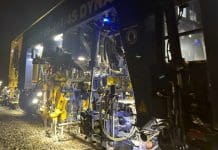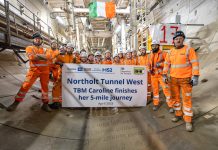Chris Fry, a specialist in Infrastructure & Regeneration at international design and engineering consultancy Ramboll, discusses the importance of smart city integration and takes a look at the challenges faced when updating the infrastructure of established towns and cities
As we continue to grow and develop our towns and cities, we need to update the historical foundations and infrastructure of many towns and cities in the UK. With restricted budgets and the increasing need for cities that can support our modern demands, an efficient and practical solution is needed.
Globally, the number of connected devices that form the Internet of Things (IoT) is expected to rise from 15 billion to 75 billion between 2015 and 2025 (Statista). The devices themselves will also become smarter over time. We currently have self-weighing recycling bins that can report in when they need emptying, but in the future, the bin may be able to identify the exact food that you have eaten and automatically reorder it for you.
There is a rapidly expanding range of applications and potential benefits of smart technology in our villages, towns and cities. Modular and offsite construction are beginning to revolutionise construction productivity with significant savings in time and materials, and improvements in safety. Similarly, disruptive start-ups and established industry players are racing to introduce new products and services that harness smart energy, smart buildings and smart mobility.
Cleaner and greener spaces can also be achieved using smart technologies. However, as Matthew Farrow of the Environmental Industries Commission observes “global cities are struggling with managing the pressures of growth, and while over time many of these pressures will be environmental, the most urgent have often been things like transport congestion”.
Fundamentally, “smart” should not be seen as a goal in itself – but rather the means to improve places for people and society. Smart city visionaries, planners, designers and operators alike ignore their customers and local communities at their peril.
As one of the UK’s leading cities in this arena, Bristol’s smart city and innovation strategy has a clear focus on citizen-centric solutions.
The pace of technological advancement is now opening many more doors than we are able to walk through. Clarity of purpose informed by a deep understanding of local needs is therefore a fundamental key to success for smart city interventions. Concepts such as liveability and sustainability can provide useful guiding lights in the search for this clarity of purpose. For the Danish capital Copenhagen, an aspiration for liveability has become well established in forward planning for the city. This has led to more integrated solutions such as bringing water management and green infrastructure together through sustainable drainage systems and larger scale ‘blue-green’ infrastructure solutions such as green streets and multi-purpose public spaces.
When considering the opportunities for creating a smarter city, Copenhagen is similarly following an integrated and liveability orientated approach. The exploration of options for city wide digital communication networks, to enable smart control of street lighting and traffic controls, soon expanded to explore other opportunities – for example water management and even how vulnerable citizens, including those with dementia, could be kept safe.
Funding and financing also provide a real conundrum for those pursuing smart city aspirations, not least because in this interconnected world, the question of who pays and who benefits leads to complex answers. The costs and benefits of “backbone” digital communication networks, the smart solutions that utilise them and the ultimate beneficiaries (e.g. via lower asset maintenance costs), may fall on different actors at different times. Technology companies and the public sector
will naturally also have different expectations and constraints on their investments that will affect business models.
With economic complexity and also our ageing infrastructure in mind, practicality must also be an important watchword. An ambitious vision for the medium to longer term is helpful but a wholly top down smart city approach is unlikely to deliver results in the short term. Working with the grain of existing assets and opportunities to upgrade them with smarter functionality alongside new fully smart interventions is likely to be more successful.
This approach can deliver value on a site by site basis as well helping to build confidence in smart technologies. Tangible examples include using digital design and visualisation to unlock buildable space on complex sites or deploying localised sensor networks to guide the sensitive renewal of existing infrastructure assets like historic bridges and vital concrete structures. Overlay those localised solutions with improved analysis of existing operational data and early artificial intelligence for transportation, waste and energy systems across a city and we will be well on an evolutionary path to smarter places.
Ramboll is an active contributor to the EIC’s collaborative Sustainable Smart Cities programme. For more information see www.sustainablesmartcities.org
Chris Fry

Director
Infrastructure & Regeneration
Ramboll
https://twitter.com/ramboll_uk
https://www.linkedin.com/company/ramboll/



![[VIDEO] Cambridge waste water plant granted permission to relocate Artist impression of the new Cambridge waste water plant and surrounding land](https://www.pbctoday.co.uk/news/wp-content/uploads/2025/04/p.151-768x364-1-218x150.jpg)










